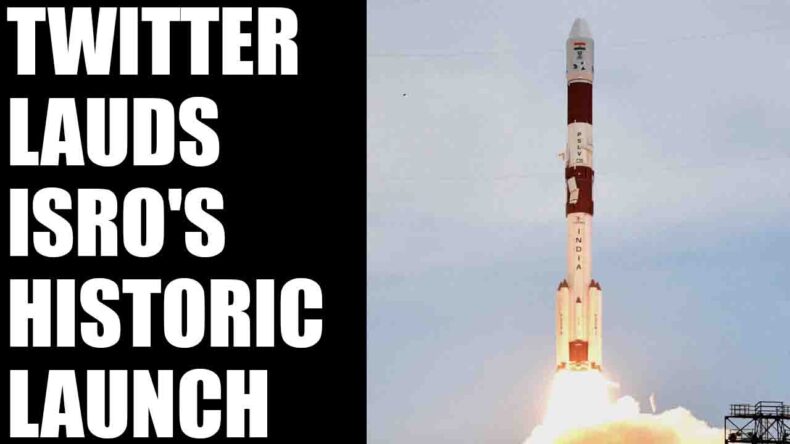ISRO has developed the SSLV to put in low earth orbit satellites weighing less than 500 kg.

Source: Bing images
Sriharikota: In a revolutionary move, the Indian Space Research Organisation (ISRO) created history by successfully launching the maiden Small Satellite Launch Vehicle (SSLV) which is an earth observation satellite and a student satellite from the spaceport in Sriharikota.
ISRO’s maiden launch of a small satellite launch vehicle (SSLV), will deploy satellites in low earth orbit. Scientists at the ISRO have been engaged in developing small launch vehicles over the last few weeks to meet the demand for such small satellites, which weigh up to 500 kgs and can be injected into the 500 km low earth orbit.
Features of SSLV
The SSLV is 34m tall, about 10m less than the PSLV and it has a vehicle diameter of two meters as compared to the 2.8 meters PSLV. SSLV has a lift-off mass of 120 tonnes while PSLV has 320 tonnes, which can carry payloads up to 1,800 kgs. On Sunday’s mission, SSLV would carry Earth Observation Satellite -02 and a co-passenger satellite AzaadiSAT — developed by the student team of ‘Space Kidz India’.
ISRO: Significance of SSLV
The significance of SSLV is that it has the fourth stage which carries a liquid propulsion-based Velocity Trimming Module to place the satellites into the intended orbit. The rocket comprises solid fuel to fire the first three stages.
The Earth Observation Satellite designed by ISRO offers advanced optical remote sensing operating in an infra-red band with high spatial resolution. It belongs to the microsatellite series of spacecraft.
After traveling for about 13 minutes, SSLV is expected to first place the EOS-02 into the intended orbit followed by AzaadiSAT which is an eight kg Cubesat designed by girl students from government schools across the country to mark the 75th Anniversary of Independence.
The Indian Space Research Organisation has developed the SSLV to put in low earth orbit satellites weighing less than 500 kg, which is much in demand for applications such as earth observation and providing internet connectivity in remote areas.
The primary payload of the first demonstration flight of SSLV is an earth observation satellite MicroSat 2A.
According to ISRO, an SSLV rocket can be manufactured within a week to meet the demands of the burgeoning space sector.
The AzaadiSAT carries 75 different payloads each weighing around 50 gms. Girl students from rural regions across the country were guided by ISRO scientists to build these payloads which are integrated by the student team of ‘Space Kidz India’.
The ground system developed by Space Kidz India would be utilized for receiving the data from this satellite. ISRO began launching sounding rockets in 1965 to probe the upper atmospheric regions and for space research. The first sounding rocket was launched near Thiruvananthapuram in November 1963.
The space agency later in 1980 launched the country’s first Satellite Launch Vehicle -3 which can carry payloads of up to 40kgs. In 1987, ISRO conducted the first developmental flight of the Augmented Satellite Launch Vehicle (ASLV) with a payload capacity of up to 150kgs.
Later, ISRO made its first Polar Satellite Launch Vehicle in September 1993, which was unsuccessful. However, in 1994, ISRO tasted success on the first successful launch as it emerged to be a reliable and versatile trusted workhorse.
ISRO conducted the first flight of the Geosynchronous Satellite Launch Vehicle in 2001 which is the largest launch vehicle developed by India, currently under operation. The GSLV has a lift-off mass of 414.75 tonnes.
A revolutionary move indeed, as India progresses 75 years of Independence, ISRO has achieved a feat no one could think of. India has indigenously developed several technological implements, however, the world needs to see more of what we have to offer.
The government must develop the thought of inquisitiveness within the young so that technological development can gain impetus. This can only be achieved with the help of the government and the citizens of India.













